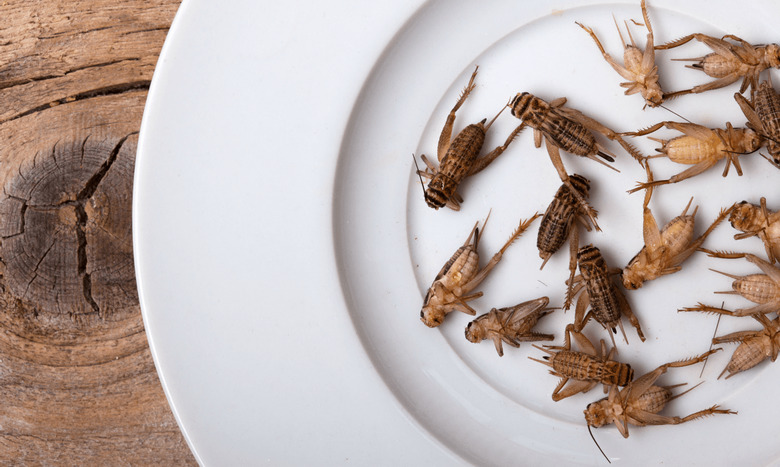Cricket Flour: The Newest High-Protein Baking Ingredient
When you tell a joke and hear nothing but crickets chirping in response, it's safe to say that your wit was either nonexistent or misguided. Alternatively, if you can't sleep because of one particular cricket chirping just outside of your bedroom window, you may want to pound that cricket into smithereens so that it will stop its infernal racket. This concept is the pith of what may prove to be the latest healthy eating trend, albeit in a manner that's much less rage-inspired and more environmentally focused slash nutrition-based.
Click here to see 9 Countries Brave Enough to Eat Insects Without a Chocolate Coating.
That's right, folks: Cricket flour is here, and it's fly-hopping (that's sort of how we've always perceived crickets to move, in extended, mid-range fly-hops) its way into the forefront of the minds of healthy eaters and eco-conscious folk alike. But why now?
With credentials like a high protein digestibility and a maximum of 80 percent bodyweight edibility (compared to 55 percent for chicken and 40 percent for cattle), it's easy to see why insects such as crickets are a veritable fountainhead of quality calories. Crickets are also a source of complete proteins, and they have twice as much protein as beef jerky and nearly three times as much as chicken. They also have twice as much iron as spinach, so take that, Popeye.
You want more? Crickets are also great for the environment. Cows require 2,000 gallons of water per pound, whereas only one gallon is needed by crickets. Oh, and you'll also get 60 pounds of cricket protein from 100 pounds of feed as opposed to a meager five pounds of beef protein or 30 pounds of chicken protein for the same amount of feed.
You may be thinking to yourself, still, "Wow, that sounds great. I love the environment and protein! But there's no way in four-winged, six-legged hell I'd eat a bug."
A report by the Waste and Resources Action Programme (WRAP) notes this aversion, saying that there is an undeniable "yuck factor" for many people when faced with the concept of eating insect proteins like cricket flour. "Western attitudes towards entomophagy (the consumption of insects by humans) are typically negative," the report says. Most bugs are perceived as unclean and potentially disease-ridden.
This perception is indeed misguided and, perhaps, fueled by science fiction, horror movies, and general squeamishness regarding the unknown. (Have you ever seen Candyman? Horrifying stuff.) Regardless of your personal stance on entomophagy, crickets will indeed be part of the sustainable diet of the future whether you like it or not, so a little open-mindedness may be necessary in order to help keep our planet virile.
With lower land use requirements than food sources like chickens, cows, and swine, insects are a great solution to ongoing issues related to the over-farming of our fragile planet. The WRAP report says that the successful incorporation of crickets and other insects into our diets will take a lot of consumer acceptance, but that a change in mindset on consuming bugs may be more possible as our planet's environmental integrity becomes more and more unstable:
"Success of new generations of protein sources will require consumer acceptance," the WRAP report says. "It has been shown that environmental concerns can play a part in changing attitudes, though recent uptake of insect protein flour in North America has been a response to nutritional benefits."
These nutritional benefits, touched on earlier, are one of the many reasons that over two billion people already consume insects. And, as each day goes by and insect-based foods like cricket flour gain more and more momentum in circles educated on sustainability and healthy eating, it's becoming easier to find cricket flour-based products in stores near you. Cricket pasta, cricket milkshakes, and cricket protein bars can be found in restaurants and grocery stores across the country. We've even seen Exo's cricket flour protein bars in our local Wegmans right alongside Quest Bars and Clif Bars.
Like an undulating orchestra of crickets (yeah, we didn't know that a group of crickets was called an orchestra until now either), insect protein is crawling and chirping and fly-hopping its way into contemporary food culture. We encourage you to look past any negative feelings you may have for entomophagy and consider the environmental positives of consuming high-protein cricket flour. And the best part? A little New Mexican birdy told us that cookies made with cricket flour taste totally normal, just like normal cookies.
The accompanying slideshow is provided by The Daily Meal special contributor Hayden Field.
